
views
Assuming the Proper Stance
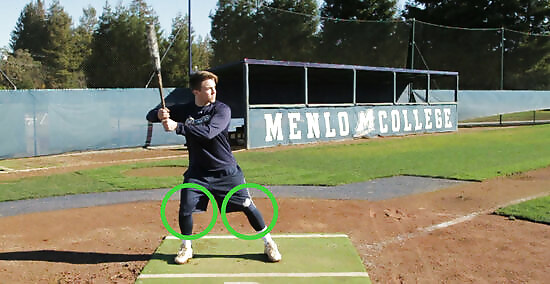
Line your legs and feet up beneath your shoulders. Place your feet shoulder width apart or slightly wider. Your feet should be parallel to one another and aligned directly under your shoulders. If you’re right handed, your left side should be facing the pitcher, with your head pointed in the direction the ball will be coming from. If you’re left handed, it will be your right side. Above all, your stance should be comfortable. Resting on the balls of your feet will make your movements quicker and your stance more reactive.

Keep your knees bent. Bend your knees and sink into the balls of your feet. Don’t crouch or stoop too low—make sure there is a little spring in your knees and hips. A lower center of gravity will help you generate force in your swing and stabilize you while you’re batting. It’s important to adopt a steady, grounded stance to keep from compromising your balance. Don’t stick out your butt or let your upper body lean too far.
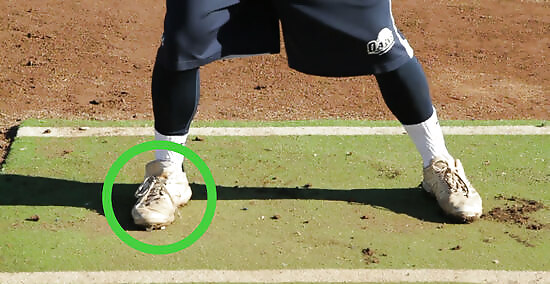
Plant your back foot. Keep both feet firmly rooted on the ground until you’re ready to start your swing. The more steady your stance, the more power you’ll be able to produce by driving from the feet up. As you begin the swing, you will take a small step with your front foot and twist the back foot to follow through, but up until you make contact with the ball, both feet should be locked in place. Your weight should be positioned very slightly over your rear foot to prepare you to step into your swing later on.

Stay loose and ready. Relax your muscles and prepare to move your body in one fluid motion. If you’re tense, your movements will be erratic and your speed and precision will suffer. Shake out your shoulders, hips and ankles before stepping up to bat. Remind yourself to remain loose and poised rather than bunching up. Sports research has found that athletes move much faster and more smoothly when they are relaxed.
Getting the Right Grip and Body Positioning
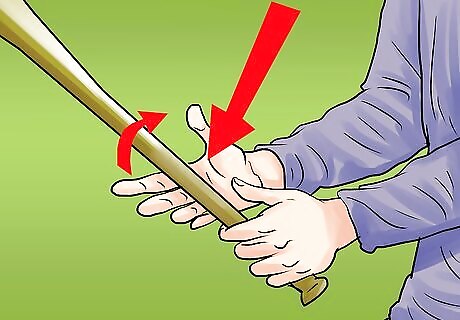
Get your hands in the right position. To get an effective grip, lay the handle of the bat across the fingers of both hands, then wrap your hands around the bat. Don’t hold the bat in the palms, as this doesn’t allow you to flex and rotate your wrists as well when you swing. Keep a light grip on the bat until the moment you make contact with the ball to maximize your speed and reactivity. Don’t grip too high on the handle of the bat; this can blunt your swing. There should be very little space between the pinky finger of your bottom hand and the bottom knob. Always think of gripping the bat with the fingers, not the whole hand.

Line up your knuckles. Keep the tops of your fingers in one long row down the grip of the bat. The bat will shift in your hands as you swing, and both hands will naturally turn on the handle. Use the pressure of your fingers to steady the bat, but don’t grip it too tightly. If it isn’t comfortable to hold the bat with the tops of your knuckles aligned, try turning your hands inward until your middle knuckles point in the same direction. This is known as a “box grip.”
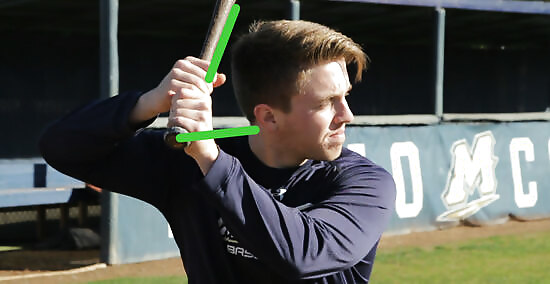
Let the bat hover over your shoulder. Let the bat point upwards at an angle over your shoulder rather than resting it flat across your back. Keep the bat raised off your shoulder, ready to begin the swing. At no point should any part of the bat touch your back, neck or shoulder. The angle at which you hold the bat should be around or just over 45 degrees. It’s easier to enter into the swing quickly if there’s already some muscular tension on the bat. Your swing will be much more sluggish if you’re trying to move the bat from a dead stop.
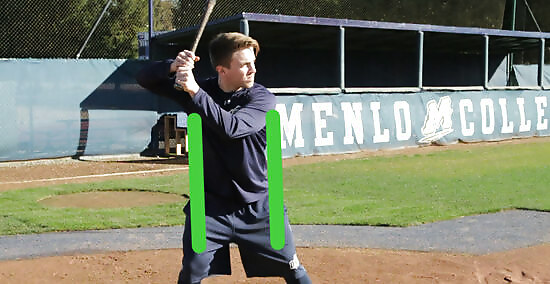
Keep your body in a straight line. Situate your center of gravity over your feet and keep your toes, knees, hips and shoulders aligned. Point your chin toward the mound to have an eye on the ball at all times. From this position, you will explode and uncoil once the ball is within hitting distance. If any part of your body deviates from your linear stance, you will sacrifice speed, power and control.
Taking a Good Swing

Take a small step to increase your power. Once the ball leaves the pitcher’s hand, step out very slightly with the front foot. Only move the foot 2–3 inches (5.1–7.6 cm), and be careful not to come out of alignment or lose tightness in your core as you step. This will increase the power of your swing by adding directional force to the motion of the hips and shoulders. Be careful not to throw off your balance as you step. The step should be quick, short and leave you in a position with a solid base to hit the ball.
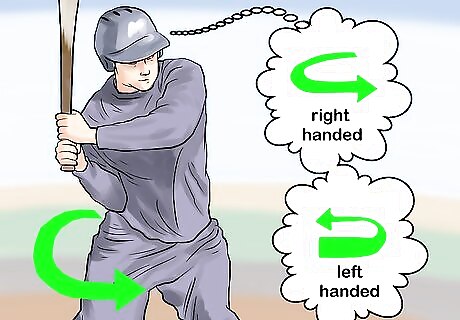
Initiate the swing with your hips. With one quick motion, rotate the hips to create momentum for the swing. Don’t let the hips sway or move out of alignment with the rest of your body as you swivel. If you’re right handed, you should turn your hips counterclockwise, and clockwise for left handed batters. Most of the power of a good swing originates at the hips. The swing should begin with the hips, with the shoulders following closely behind. A lot of injuries occur when players try to “muscle” the ball with a wrenching motion of the shoulders. Try to stay upright as you rotate so you don’t come off your axis.
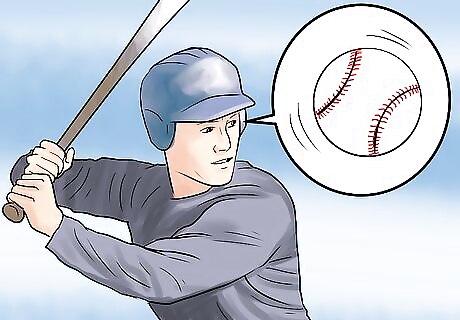
Keep your eyes on the ball. Drop your chin and keep your head held low throughout your swing. Your line of sight should be locked onto the ball at all times, from the beginning of the pitch to the moment that either the bat touches the ball or you strike out. Stay focused and get ready to time your swing. Lowering your chin will help keep your head in alignment with the rest of your body, as you will be hunched over and bent at the waist slightly while preparing to bat. Don't tilt your head too much when dropping your chin. If your eyes are not level, it may throw off your perspective and compromise your ability to zero in on the ball. During batting practice, pay close attention to the path that the ball takes to get better at tracking it as it moves toward you.

Turn your shoulders into the swing. Bring your shoulders across your body, following the hips. Remain relaxed until just before the bat strikes the ball. The entire body should uncoil like a spring, from the feet up through the hips, ending with the turn of the shoulders. The shaft of the bat should stay in tight during the first part of the swing. As a rule, the further the tip of the bat is from the body, the less leverage you have.

Follow through to drive it home. After you’ve struck the ball, continue driving through the swing until the bat is extended over your opposite shoulder. At the end of your rotation your upper body should be facing the pitcher. A good follow through will put extra heat on the ball to smash it out of the park. Following through makes the most of the momentum of rotation, stopping the forward movement of the ball and sending it back with as much power as possible. Some players prefer to keep both hands on the bat as they follow through, while others release their top hand and let the bat continue swinging like a backhand. Try out both methods, but do whatever feels most comfortable to you.




















Comments
0 comment